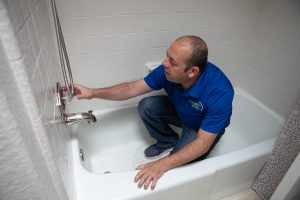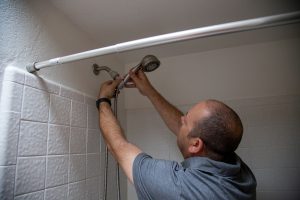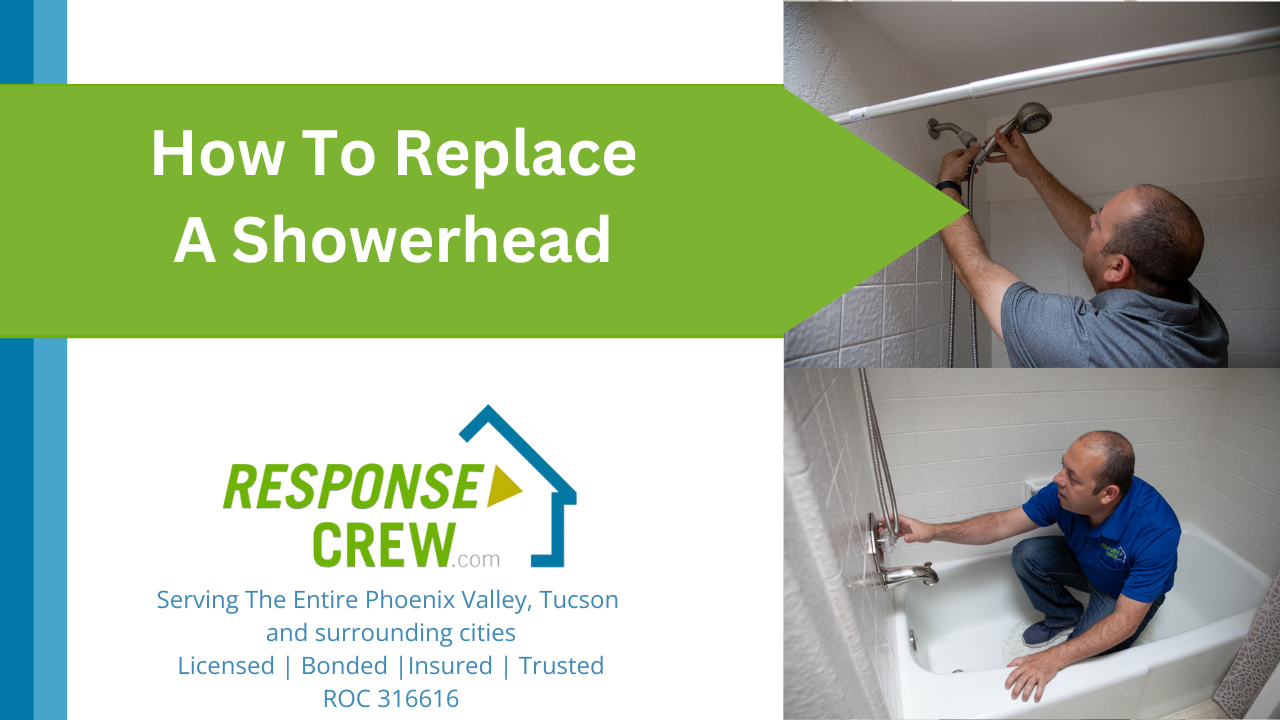Replacing a showerhead is a straightforward DIY task, and we’re here to guide you through it. Not only is it simple, but it can also lead to significant savings on your energy and water bills. Upgrading your showerhead can reduce water consumption by 25% to 60%, thus cutting down on energy used for heating your water. If your current showerhead predates 1992, when low-flow models became standard, it’s likely a water-waster. Here’s how to determine if it’s time for a change:
Find out If Your Wasting Water
- Assess Water Usage: Place a marked container under the showerhead and time how long it takes to fill with one gallon of water. If it takes less than 20 seconds, consider upgrading to a modern, low-flow showerhead.
Now, let’s proceed with the replacement process:
- 1. Turn off Faucets: Shut off the shower faucets. No need to cut off the water supply to the entire house.

- 2. Remove Old Showerhead: Unscrew the old showerhead turning counterclockwise by hand. If it’s tightly stuck due to corrosion, you may need to use a wrench. Protect the fixture with masking tape or a cloth to prevent damage.
- 3. Prepare the Threaded Pipe: Once the old showerhead is off, clean any buildup or debris around the threaded pipe protruding from the wall. Ensure the threads are dry.
- 4. Apply Plumber’s Tape: Wrap plumber’s tape clockwise around the threads. This tape forms a tight seal between the pipe and the new showerhead, preventing leaks.
- 5. Install the New Showerhead: Screw the new showerhead onto the taped pipe clockwise by hand. Ensure it’s securely tightened.

- 6. Check for Leaks: Turn on the hot and cold faucets and observe if there are any leaks from the showerhead. If there are leaks, turn off the water and tighten the connection further.
By following these steps, you can easily replace your showerhead, potentially saving water and energy in the process.
If you prefer to hire a professional to do this call Response Crew Handyman. We are eager to assist you with all of your Handyman needs.






